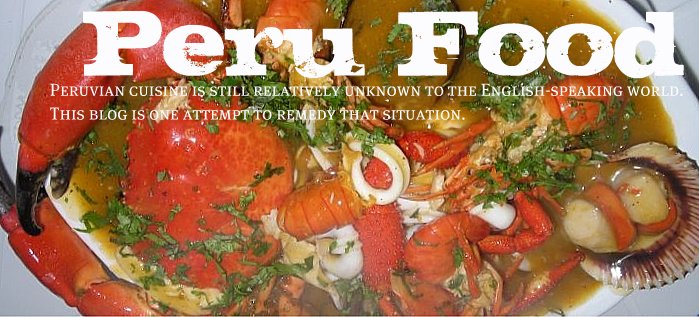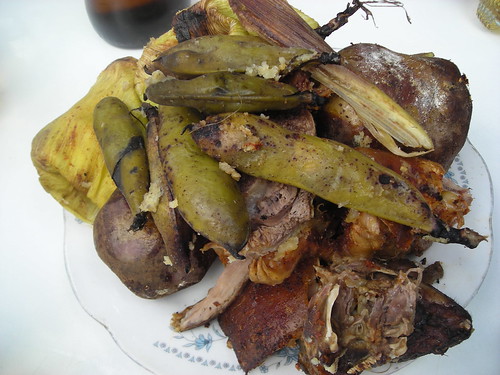In Peru, habas are broad beans, also known as fava beans, or in Latin, vicia faba.
Originally from Asia and Africa, this ancient crop traveled to Europe and then crossed the Atlantic during the Columbian exchange, eventually reaching Andean Peru.
In the Andes, habas are now considered a traditional food. They are often boiled in their skins and half the fun is peeling them and finding the flavorful bean inside.
In the earthen-cooked meal known as pachamanca, habas always accompany the meat and potatoes.
At Mundo Quechua, a blog dedicated to promoting the Quechua language, I came across this children's story about habas, in Quechua and Spanish.
Mundo Quechua's author has kindly allowed me to translate this simple story to English and republish his post, in all three languages.
Iskay Hawas Ruruchamanta
Huk runapa qipinmantas iskay hawas ruruchakuna urmaykusqaku ranra aqu allpaman.
Chaysi punchaw rupaypi yakumanta yaqa wañusqaku. Tutankunataq chirimanta katkatatasqaku. Wakin punchawkunataq pichinkukuna yaqa yaqa mukurqusqaku.
Chaynas iskaynin hawaskunaqa, unay sinchita ñakarisqaku. Mana para kaptin, mana allpa kaptin, yaqaña wañukusqaku. Chayllamansi hanaqpacha aswan kuyapayasqa parata apachimusqa.
Chay tarpuy killa parawansi, kallpanchakusqaku, chaymantas allpawan qataykukuspa puñusqankupi, qumir yuraman tukuspanku kusisqa kawsasqaku.
Las Dos Semillitas de Haba
Dice que un día de la espalda de un campesino se cayeron, a un lugar pedregoso y arenoso, dos semillitas de haba.
Dice que con el calor del día casi mueren y en la noches con el frio tiritaban. Otros días los pájaros casi se lo comieron
Se cuenta que ahí sufrieron por mucho tiempo, por falta lluvia, a falta de tierra hasta casi murieron. Pero un día el Dios envió lluvia divina.
Con la lluvia de la época de siembra se fortalecieron, dice que luego se cubrieron con tierra, ahí donde cayeron, y luego se trasnformaron en una planta verde y asi felices vivieron.
The Two Haba Seeds
One day two small haba seeds fell off the back of a peasant into a rocky and sandy place.
They almost died in the heat of the day and trembled in the cold of night. Some days, birds almost ate them.
The two haba seeds suffered there for a very long time. There was no rain, no soil, and they almost died. But one day, God sent them divine rain.
With the rain from the planting season, they became stronger. Later they covered themselves with soil, right there where they had fallen, and in time, became a green plant, and lived happily ever after.
Source: Mundo Quechua
Click here for the Peru Food main page.
TAGS: Peru, Peruvian, food, cooking, cuisine, cocina, comida, gastronomía, peruana
TAGS: Peru, Peruvian, food, cooking, cuisine, cocina, comida, gastronomía, peruana





3 comments:
What a delightful story! I wish I could listen to a reading in the original Quechua version, but your translation captured the spirit of the story, judging from the Spanish one (which by the way, reading it aloud, sounded very melodic).
It's been years since my last pachamanca, and I haven't had habas in a long time as well. Now I'm craving them big time! Where could I find habas or eat a pachamanca here in L.A.??? Guess I'll have to resign myself to having some edamame in the meantime, oh well...
Que linda esta historia!! Yo también hace mucho que no como pachamanca...que ganas!! y las habitas saladas? mmmm
And it is from the +habas+ bean that we get the word "Lima bean" in English -- that is, "the bean from Lima".
Post a Comment